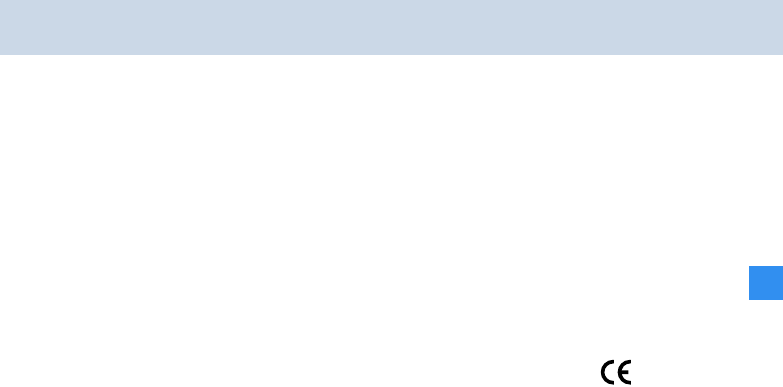
53
Manufacturer declarations
In addition, you as the end-user, may have statutory rights in your country, which
are not affected by the terms of this warranty; the warranty is governed by the
prevailing law in the country in which you, the end-user, bought the Sennheiser
product. The UN Sales Convention regulations are not applicable.
In the event of a claim under the terms of this warranty, send the device, including
accessories and sales receipt, to the responsible service partner.
You can find the current list of all global Service Partners of Sennheiser electronic
GmbH & Co. KG on the Internet at www.sennheiser.com.
The customer bears the risk of delivery. To minimise the risk of damage in transit,
we recommend that the original packaging is used.
CE Declaration of Conformity
This equipment is in compliance with the essential requirements and other relevant
provisions of the Directives 2004/108/EC, 2006/95/EC and 1999/05/EC. The
declaration is available on the Internet at www.sennheiser.com. Before putting the
device into operation, please observe the respective country-specific regulations!
Statements regarding FCC and industry Canada
This device complies with Part 15 of the FCC Rules and with RSS-210 of Industry
Canada. Operation is subject to the following two conditions: (1) this device may
not cause harmful interference, and (2) this device must accept any interference
received, including interference that may cause undesired operation.
This equipment has been tested and found to comply with the limits for a Class B
digital device, pursuant to Part 15 of the FCC Rules. These limits are designed to
provide reasonable protection against harmful interference in a residential
installation. This equipment generates, uses and can radiate radio frequency
energy and, if not installed and used in accordance with the instructions, may cause
harmful interference to radio communications. However, there is no guarantee that
interference will not occur in a particular installation. If this equipment does cause
harmful interference to radio or television reception, which can be determined by
turning the equipment off and on, the user is encouraged to try to correct the
interference by one or more of the following measures:
y Reorient or relocate the receiving antenna.
y Increase the separation between the equipment and receiver.
y Connect the equipment into an outlet on a circuit different from that to which
the receiver is connected.
y Consult the dealer or an experienced radio/TV technician for help.
This class B digital apparatus complies with the Canadian ICES-003.
068 2


















